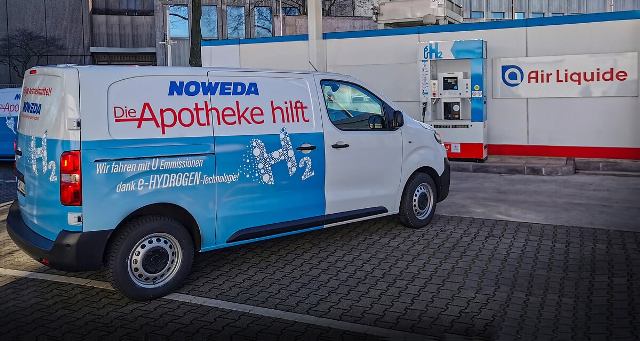
Electric Opel LCV models with climatised cargo area
The Opel Vivaro-e and the Opel Vivaro-e HYDROGEN were recently added to the fleet of the NOWEDA pharmacy cooperative in Essen, Germany. More precisely: The battery-electric and hydrogen fuel cell vans are currently proving their suitability for everyday use for the pharmaceutical wholesale company when delivering sensitive products such as medicines and showing that they meet the requirements of the EU’s Good Distribution Practice (GDP). According to this, medicines must be transported in a vehicle whose loading space is climatised between 15 and 25 degrees Celsius in accordance with standard 2013/C 343/01 GDP in order to continuously ensure the quality of medicines.
Vivaro-e: Dülmer relies on all-round insulation and water heating
This also applies to the Opel Vivaro-e converted by Fahrzeugbau Dülmer GmbH. Here, too, anti-slip materials and high-strength lightweight construction methods are used in the load compartment. In contrast to CSA, Dülmer relies on all-round insulation of the side walls and partition for the solution tested in the company’s own climate chamber. This is intended both to maintain the desired load compartment temperature for longer and, thanks to smooth wall surfaces, to make it easier to transport stackable medicine tubs.
In the battery-electric Vivaro-e, the cooling and heating unit – here from Webasto – is also mounted to the ceiling of the load compartment with the compressor, condenser and dryer located in the spare wheel well. Elsewhere the water heater is under the floor. With the Dülmer solution, the separate battery and the control are housed in a box behind the driver’s seat in the cargo area. The load compartment temperature can be regulated via a unit in the centre stack.
Locally emission-free use: apparent from first sight
From the outside, the two Opel vans used by NOWEDA make it clear that they are locally emission-free and therefore resource-saving. The battery-electric Vivaro-e shows an oversized power cable on the sides with the note “100% fully electric delivery thanks to the e-drive!”; and the hydrogen fuel cell transporter states: “We drive with 0 emissions thanks to e-HYDROGEN technology!”. In addition, it signals its sustainability with a stylised H2 print depicting air bubbles.
The specialists estimate around four weeks after delivery of the base vehicle for the respective conversions. Interested parties can get advice on this from their Opel partner.
Information Source: Read More “
Energy Monitors , Electric Power , Natural Gas , Oil , Climate , Renewable , Wind , Transition , LPG , Solar , Electric , Biomass , Sustainability , Oil Price , Electric Vehicles,


